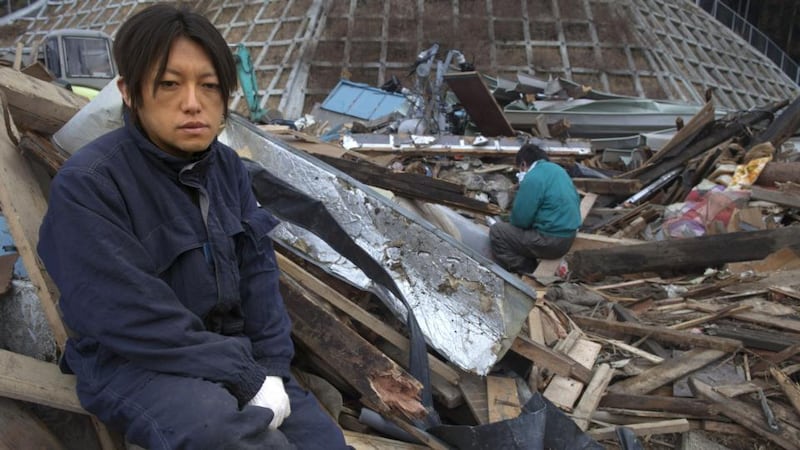Masao Yoshida, a nuclear engineer who took charge of the Fukushima Daiichi power plant two years ago as multiple reactors spiraled out of control after a tsunami hit the coast, has died. He was 58.
The cause was cancer, said the Fukushima plant's operator, Tokyo Electric Power. Mr Yoshida had been chief manager at Fukushima Daiichi for just nine months when a 42-foot tsunami hit the site on March 11th, 2011, knocking out vital cooling systems to the plant's six reactors. Eventually hydrogen explosions and fuel meltdowns occurred at three reactors, releasing vast amounts of radioactive matter into the environment.
The death toll continues to rise with numbers of dead and missing exceeding 20,000 in a tragedy not seen since World War II in Japan


Although the company was widely criticised for its handling of the disaster, which forced more than 100,000 people from their homes, Mr Yoshida won praise for his effort to minimise the damage. He has been faulted, however, for failing to invest in adequate tsunami walls at the company’s nuclear power plants when he was head of nuclear facilities. Mr Yoshida later apologised to reporters, saying he had been “too lax” in his assumptions of how big a tsunami might hit the coastal plant.
Mr Yoshida took a leave from Tokyo Electric in late 2011 after receiving a diagnosis of esophageal cancer. Experts have said his illness was not a result of radiation exposure from the accident, given how quickly it came on. Survivors include his wife, Yoko, and three sons. When the tsunami hit, Yoshida took command from inside a fortified bunker at the plant. In video footage of the command room released by Tokyo Electric last year, Mr Yoshida can be seen at times pushing his workers to hook up water hoses or procure fuel, at times tearfully apologising to teams he sent out to check on the stricken reactors.
At one point, he ignores orders that he is told come directly from prime minister Naoto Kan to stop injecting seawater into one of the reactors, a last-ditch measure taken by plant workers to try to cool it. (Mr Kan later denied that he had given such orders and suggested that Tokyo Electric officials had probably misunderstood.)
Mr Yoshida later offers to lead a “suicide mission” with other older officials to try pumping water into another reactor but is dissuaded. And as officials warn that core meltdowns have most likely started, he directs men to leave the reactors but stays put in the bunker. Mr Yoshida later said that the thought of abandoning the plant never occurred to him.
"I fear we are in acute danger," Mr Yoshida is heard saying in the video shortly after yet another blast rocks the command room. "But let's calm down a little. Let's all take a deep breath. Inhale, exhale." Masao Yoshida was born on February 17th, 1955, in Osaka, Japan, to a family that ran a small advertising firm. An only child, he spent much of his middle and high school years practicing the Japanese martial art kendo. He went on to study nuclear engineering at the Tokyo Institute of Technology and joined Tokyo Electric after graduate school.
He worked his way up through the company’s nuclear power division, overseeing its nuclear facilities from 2007 until being appointed chief of Fukushima Daiichi in June 2010. The tsunami that struck the plant was the largest in recent memory. He led the disaster response for eight months before going on sick leave.
On his last day at Fukushima Daiichi in December 2011, according to a book on Yoshida by Kadota Ryusho, he again rallied his troops. “You still have a difficult road ahead, but I know you will overcome,” Yoshida is quoted as saying. “I promise to do my best to return.”
NYT














